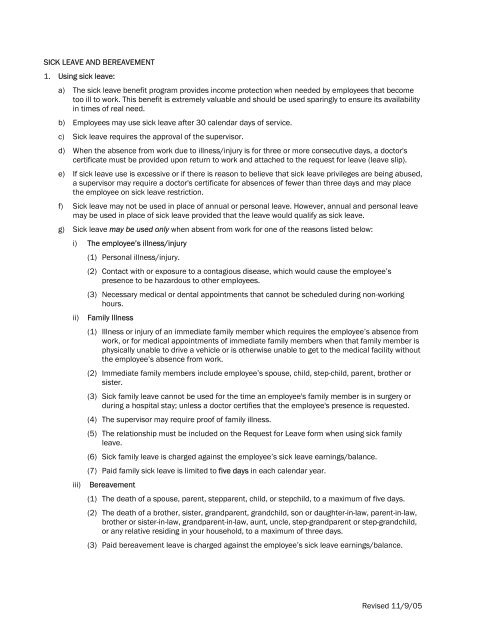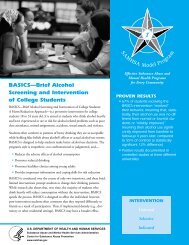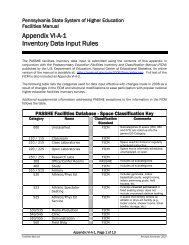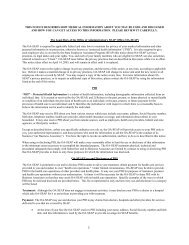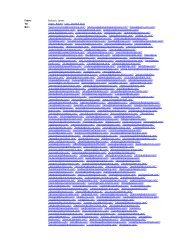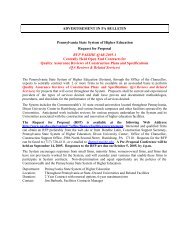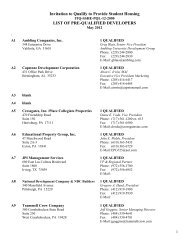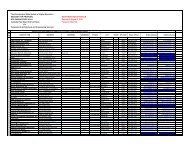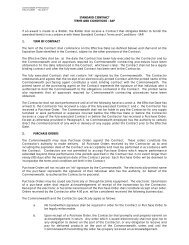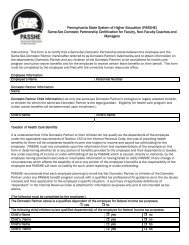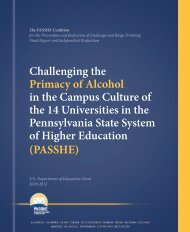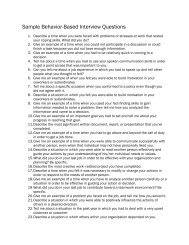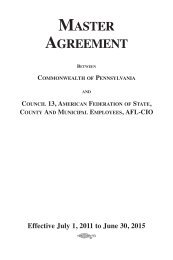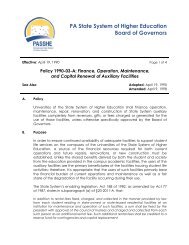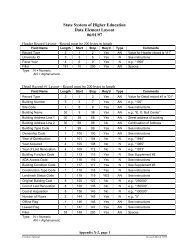Revised 11/9/05 SICK LEAVE AND BEREAVEMENT 1. Using sick ...
Revised 11/9/05 SICK LEAVE AND BEREAVEMENT 1. Using sick ...
Revised 11/9/05 SICK LEAVE AND BEREAVEMENT 1. Using sick ...
You also want an ePaper? Increase the reach of your titles
YUMPU automatically turns print PDFs into web optimized ePapers that Google loves.
<strong>SICK</strong> <strong>LEAVE</strong> <strong>AND</strong> <strong>BEREAVEMENT</strong><br />
<strong>1.</strong> <strong>Using</strong> <strong>sick</strong> leave:<br />
a) The <strong>sick</strong> leave benefit program provides income protection when needed by employees that become<br />
too ill to work. This benefit is extremely valuable and should be used sparingly to ensure its availability<br />
in times of real need.<br />
b) Employees may use <strong>sick</strong> leave after 30 calendar days of service.<br />
c) Sick leave requires the approval of the supervisor.<br />
d) When the absence from work due to illness/injury is for three or more consecutive days, a doctor's<br />
certificate must be provided upon return to work and attached to the request for leave (leave slip).<br />
e) If <strong>sick</strong> leave use is excessive or if there is reason to believe that <strong>sick</strong> leave privileges are being abused,<br />
a supervisor may require a doctor's certificate for absences of fewer than three days and may place<br />
the employee on <strong>sick</strong> leave restriction.<br />
f) Sick leave may not be used in place of annual or personal leave. However, annual and personal leave<br />
may be used in place of <strong>sick</strong> leave provided that the leave would qualify as <strong>sick</strong> leave.<br />
g) Sick leave may be used only when absent from work for one of the reasons listed below:<br />
i) The employee’s illness/injury<br />
(1) Personal illness/injury.<br />
(2) Contact with or exposure to a contagious disease, which would cause the employee’s<br />
presence to be hazardous to other employees.<br />
(3) Necessary medical or dental appointments that cannot be scheduled during non-working<br />
hours.<br />
ii) Family Illness<br />
(1) Illness or injury of an immediate family member which requires the employee’s absence from<br />
work, or for medical appointments of immediate family members when that family member is<br />
physically unable to drive a vehicle or is otherwise unable to get to the medical facility without<br />
the employee’s absence from work.<br />
(2) Immediate family members include employee’s spouse, child, step-child, parent, brother or<br />
sister.<br />
(3) Sick family leave cannot be used for the time an employee's family member is in surgery or<br />
during a hospital stay; unless a doctor certifies that the employee's presence is requested.<br />
(4) The supervisor may require proof of family illness.<br />
(5) The relationship must be included on the Request for Leave form when using <strong>sick</strong> family<br />
leave.<br />
(6) Sick family leave is charged against the employee’s <strong>sick</strong> leave earnings/balance.<br />
(7) Paid family <strong>sick</strong> leave is limited to five days in each calendar year.<br />
iii) Bereavement<br />
(1) The death of a spouse, parent, stepparent, child, or stepchild, to a maximum of five days.<br />
(2) The death of a brother, sister, grandparent, grandchild, son or daughter-in-law, parent-in-law,<br />
brother or sister-in-law, grandparent-in-law, aunt, uncle, step-grandparent or step-grandchild,<br />
or any relative residing in your household, to a maximum of three days.<br />
(3) Paid bereavement leave is charged against the employee’s <strong>sick</strong> leave earnings/balance.<br />
<strong>Revised</strong> <strong>11</strong>/9/<strong>05</strong>
2. Anticipating <strong>sick</strong> leave:<br />
a) At the discretion of the Chancellor, permanent employees with at least one year of service may<br />
anticipate <strong>sick</strong> leave before it is actually earned.<br />
b) Most temporary employees are eligible for <strong>sick</strong> leave after working 750 regular hours in the leave<br />
calendar year but are not permitted to anticipate <strong>sick</strong> leave.<br />
c) In no case may <strong>sick</strong> leave be anticipated beyond the end of the calendar year.<br />
3. Sick leave carry-over/payout:<br />
a) Unused <strong>sick</strong> leave may be accumulated and carried over from one calendar year to the next, up to<br />
maximum of 300 days.<br />
b) Upon certain retirements or upon death in service, the employee or their beneficiary is paid for a<br />
percentage of accumulated unused <strong>sick</strong> leave. See the leave earnings charts for details.<br />
<strong>Revised</strong> <strong>11</strong>/9/<strong>05</strong>


